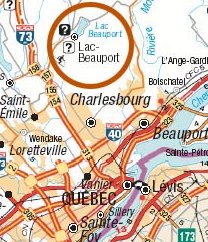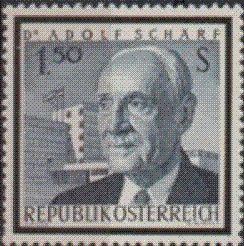

ウィーン会議に出席(松下彰良 訳)私は出席していなかったので,この第1回会議や以後の会議の活動や成果について詳細に述べることはさしひかえたい。ロトブラット教授は、1962年の出版時までに開催されたこの会議とそれに続く7つの会議について、優れた包括的な歴史をまとめている(まとめた)。ここでは,第1回会議において,次の3つの委員会が設置されたと言うだけで十分である。(1)原子力の使用により生ずる危険に関する委員会 (2)核兵器の管理(統制)に関する委員会 この委員会では軍縮の一般的な目的を概括的にまとめており,その後のパグウォッシュ会議で詳細に論じられた。 (3)科学者の社会的責任に関する委員会  第1委員会の成果としては,ロトブラット教授も指摘しているように,東西両陣営の科学者たちの間で達した,核実験の影響に関する初めての合意も多分含まれるだろう。第3委員会は,関係者共通の信念を11項目の結論として要約しており,それはその後1年たつかたたないうちに'ウィーン宣言'として知られているものの基礎となった。第1回パグウォッシュ会議は声明を発表したが,それはソ連科学アカデミーによって公式に支持され,中国では熱心に歓迎されたが,西側諸国ではそれほど宣伝されず,またそれもよりゆっくりしたものであった。'継続委員会'の最初の会合は,1957年12月にロンドンで開催された。そして,さらに同様の会議を,-その第2回パグウォッシュ会議は再びサイラス・イートンの支援によって可能になったものだが-,1958年の春,カナダのラック・ボーポール(Lac Beauport)で開催された。 第1委員会の成果としては,ロトブラット教授も指摘しているように,東西両陣営の科学者たちの間で達した,核実験の影響に関する初めての合意も多分含まれるだろう。第3委員会は,関係者共通の信念を11項目の結論として要約しており,それはその後1年たつかたたないうちに'ウィーン宣言'として知られているものの基礎となった。第1回パグウォッシュ会議は声明を発表したが,それはソ連科学アカデミーによって公式に支持され,中国では熱心に歓迎されたが,西側諸国ではそれほど宣伝されず,またそれもよりゆっくりしたものであった。'継続委員会'の最初の会合は,1957年12月にロンドンで開催された。そして,さらに同様の会議を,-その第2回パグウォッシュ会議は再びサイラス・イートンの支援によって可能になったものだが-,1958年の春,カナダのラック・ボーポール(Lac Beauport)で開催された。 そうしてその後,より野心的な努力があった。即ち,1958年9月,オーストリアのキッツビュール(Kitzbuhel)で重要な会議(注:第3回パグウォッシュ会議)が開催された。それは,テオドール・ケルナー財団(Theodor Koerner Foundation)の援助のもと(注:Theodor Korner,1873-1957:1951~1957までオーストリアの大統領),ハンス・サーリング教授(Hans Thirring, 1888-1976: オーストリアの物理学者)の尽力で開催可能となったものだった。その後ウィーンで開催された諸集会が続いた。それ以前のパグウォッシュ会議では,新聞記者もオブザーバーも出席することを許されなかった。しかし,この第3回会議においては,オブザーバーが出席しただけではなく,参加者の家族も加わった。ウィーンでの大規模な集会では,新聞社の活動が目立った。(1958年)9月20日朝のオーストリア科学アカデミーでの会合で,ウィーン宣言が公表された。ウィーン宣言は,キッツビュールの会議でたった1人の棄権を除く全員の賛成で採択された声明であった。そしてその声明は,ロートブラット教授も言っているように,バグウォッシュ運動の信条を形作っているものである。その宣言は非常に長いので本書には収録できないが,ロートブラット教授が編集した前述のパグウォッシュ会議の歴史に関する本の中に見つけることができるだろう。会議はオーストリア大統領アドルフ・シェルフ博士(注:Dr Adolf Schärf/Routledge 社刊の『自伝』は Scharf と誤植)の開会の挨拶で始まった。なぜかというと,オーストリア政府から非常に寛大な国家的歓迎を受けていたためである。東西の多くの科学者のなかにあって,私はパグウォッシュ運動の総裁(会長)及びパグウォッシュ会議継続委員会委員長の資格で演説をした。それは私にとって,とても印象的かつ忘れがたい公式行事であると思われた。演説をしながら,祖父(John Russell)がクリミア戦争中,(やはりこのウィーンの)国会で,平和を支持して演説した歴史的事実を思い起こした。しかし祖父の主張は却下された。その大規模な集会の後,私たちは,アルター・ホフ宮殿での大統領主催の午餐会に出席した。その後,ウィーン国立公会堂で,パグウォッシュ会議出席者10名が1万人の聴衆に向かって演説する重要な集会があったが,私は出席することができなかった。
そうしてその後,より野心的な努力があった。即ち,1958年9月,オーストリアのキッツビュール(Kitzbuhel)で重要な会議(注:第3回パグウォッシュ会議)が開催された。それは,テオドール・ケルナー財団(Theodor Koerner Foundation)の援助のもと(注:Theodor Korner,1873-1957:1951~1957までオーストリアの大統領),ハンス・サーリング教授(Hans Thirring, 1888-1976: オーストリアの物理学者)の尽力で開催可能となったものだった。その後ウィーンで開催された諸集会が続いた。それ以前のパグウォッシュ会議では,新聞記者もオブザーバーも出席することを許されなかった。しかし,この第3回会議においては,オブザーバーが出席しただけではなく,参加者の家族も加わった。ウィーンでの大規模な集会では,新聞社の活動が目立った。(1958年)9月20日朝のオーストリア科学アカデミーでの会合で,ウィーン宣言が公表された。ウィーン宣言は,キッツビュールの会議でたった1人の棄権を除く全員の賛成で採択された声明であった。そしてその声明は,ロートブラット教授も言っているように,バグウォッシュ運動の信条を形作っているものである。その宣言は非常に長いので本書には収録できないが,ロートブラット教授が編集した前述のパグウォッシュ会議の歴史に関する本の中に見つけることができるだろう。会議はオーストリア大統領アドルフ・シェルフ博士(注:Dr Adolf Schärf/Routledge 社刊の『自伝』は Scharf と誤植)の開会の挨拶で始まった。なぜかというと,オーストリア政府から非常に寛大な国家的歓迎を受けていたためである。東西の多くの科学者のなかにあって,私はパグウォッシュ運動の総裁(会長)及びパグウォッシュ会議継続委員会委員長の資格で演説をした。それは私にとって,とても印象的かつ忘れがたい公式行事であると思われた。演説をしながら,祖父(John Russell)がクリミア戦争中,(やはりこのウィーンの)国会で,平和を支持して演説した歴史的事実を思い起こした。しかし祖父の主張は却下された。その大規模な集会の後,私たちは,アルター・ホフ宮殿での大統領主催の午餐会に出席した。その後,ウィーン国立公会堂で,パグウォッシュ会議出席者10名が1万人の聴衆に向かって演説する重要な集会があったが,私は出席することができなかった。
|
v.3,chap.2: At home and abroad
The Continuing Committee first met in London in December, 1957, and a further and similar conference, again made possible by Cyrus Eaton, was held at Lac Beauport in Canada in the spring of 1958. Then came a more ambitious endeavour: a large conference in September, 1958, at Kitzbuhel in Austria. It was made possible through the good offices of Professor Hans Thirring, under the auspices of the Theodor Koerner Foundation. It was followed by meetings held in Vienna. At the former conferences no press or observers had been permitted to attend. At this third conference not only were observers present but they included members of the families of the participants. At the great meetings at Vienna the press was in evidence. At the meeting in the Austrian Academy of Sciences on the morning of September 20th the Vienna Declaration was promulgated. It was a statement that had been accepted with only one abstention by all the members of the conference at Kitzbuhel and it forms, as Professor Rotblat has said, the credo of the Pugwash movement. It is too long to be included here, but may be found in his history. The meeting was opened by the President of Austria, Dr Adolf Schaef (Schärf), for the conference had been given a very generous welcome by the Austrian State. Amongst others of both East and West I spoke in my capacity of president of the movement and chairman of the Continuing Committee. It seemed to me an impressive and unforgettable formal occasion. In my speech I recalled my grandfather's speech at a Congress (also in Vienna) during the Crimean War in which he spoke in favour of peace, but was overruled. Followiag the great meeting, we attended the President's lunch in the Alter Hof. Then came an important meeting when ten of the participants in the conference addressed ten thousand people at the Wiener Stadthalle - but this I could not attend. |